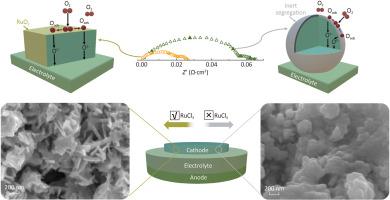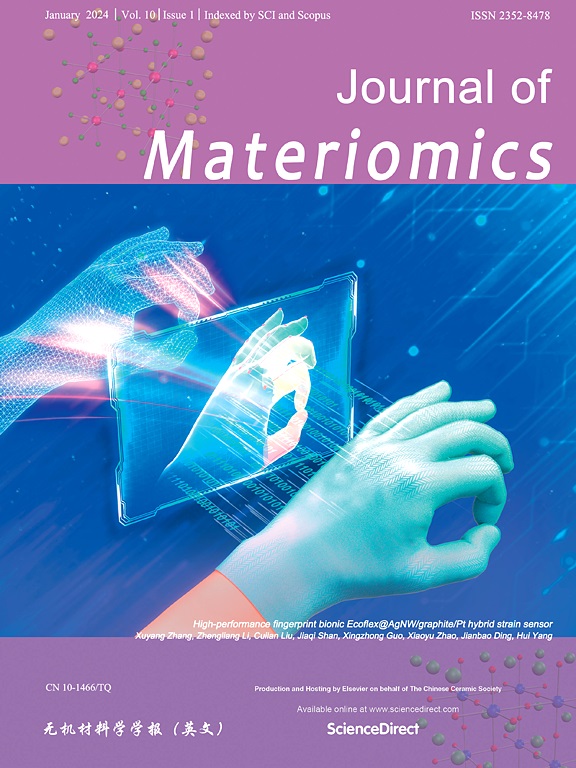In-situ transformation of a perovskite oxide from irregular particles into nanosheets for active and durable solid oxide fuel cell cathodes
IF 9.6
1区 材料科学
Q1 CHEMISTRY, PHYSICAL
引用次数: 0
Abstract
Solid oxide fuel cells (SOFCs) are of paramount importance for developing green and sustainable energy systems. However, achieving stable nanoscale cathode catalysts under their typically high operating temperatures, normally exceeding 600 °C, remains a significant challenge. By introducing a small amount of RuCl3 into the cathode slurry, an in-situ transformation of the PrBaCo2O5+δ cathode catalyst can be induced from submicrometer-scale irregular particles into nanosheets during SOFC operation. These nanosheets feature a RuO2-modified surface layer, resulting in substantial improvements in both catalytic activity and operational durability. At 750 °C and 0.7 V, SOFCs employing conventional cathode catalysts exhibit a 6.1% degradation in power density over 110 h, while those employing the nanosheet-structured catalysts achieve an 11.9% increase, ultimately stabilizing at a high-power density of 0.75 W/cm2. This work presents a simple and scalable strategy for constructing high-performance nanocatalysts and deepens our theoretical understanding of catalyst nanostructuring for SOFC applications.


钙钛矿氧化物从不规则颗粒原位转化为纳米片,用于活性和耐用的固体氧化物燃料电池阴极
固体氧化物燃料电池(SOFC)对于开发绿色和可持续能源系统至关重要。然而,在通常超过 600 °C 的高工作温度下实现稳定的纳米级阴极催化剂仍然是一项重大挑战。通过在阴极浆料中引入少量 RuCl3,可在 SOFC 运行过程中将 PrBaCo2O5+δ 阴极催化剂从亚微米级不规则颗粒原位转变为纳米片。这些纳米片具有 RuO2 修饰的表面层,从而大大提高了催化活性和运行耐久性。在 750 °C 和 0.7 V 条件下,使用传统阴极催化剂的 SOFC 在 110 小时内功率密度下降了 6.1%,而使用纳米片结构催化剂的 SOFC 功率密度提高了 11.9%,最终稳定在 0.75 W/cm2 的高功率密度。这项工作为构建高性能纳米催化剂提供了一种简单且可扩展的策略,并加深了我们对 SOFC 应用催化剂纳米结构的理论理解。
本文章由计算机程序翻译,如有差异,请以英文原文为准。
求助全文
约1分钟内获得全文
求助全文
来源期刊

Journal of Materiomics
Materials Science-Metals and Alloys
CiteScore
14.30
自引率
6.40%
发文量
331
审稿时长
37 days
期刊介绍:
The Journal of Materiomics is a peer-reviewed open-access journal that aims to serve as a forum for the continuous dissemination of research within the field of materials science. It particularly emphasizes systematic studies on the relationships between composition, processing, structure, property, and performance of advanced materials. The journal is supported by the Chinese Ceramic Society and is indexed in SCIE and Scopus. It is commonly referred to as J Materiomics.
 求助内容:
求助内容: 应助结果提醒方式:
应助结果提醒方式:


